The first step to keeping your data usage in check is to understand what is using a lot of data and what isn’t. For example, checking your email—if even if you check it four hundred times a day—isn’t going to make a dent in a 1TB data package. But streaming videos over YouTube all day will, of course.
It’s the gray area that confuses most people: Facebook, Instagram, and the like. And the issue here is that there isn’t really a clear answer on what’s “safe” and what isn’t, because it’s all defined by how you actually use these types of networks.
For example, if you scroll through Facebook and watch every video that auto-plays in your feed, guess what? You’re likely going to chew through a reasonable amount of data doing so. The same goes for Instagram.
If, however, you keep auto-playing videos disabled and selectively pick and choose the content you want to watch, you’ll likely save yourself a lot of unnecessarily used data. That said, if you’re a heavy Facebook or Instagram user, you can readily chew through several gigabytes of data per week just looking at photos. It’s actually shocking how much data you can use just thumbing through Instagram (though it probably won’t set you over unless you have a remarkably small data usage plan).
So, the loose rule here on what uses the most data down to the least when it comes to common social networks: video uses the most, by far. Music falls in the middle, and photos are going to be the smallest. Text-only, of course, is hardly even worth a mention, which is where regular web browsing falls in this line. Most of the time, just normal web use that doesn’t involve video or heavy photo viewing isn’t going to be something that makes a difference.
But since video is so prevalent on the web these days—especially if you’ve ditched cable in favor of Netflix and YouTube—let’s talk about how to save a bit of bandwidth without dramatically changing your habits.
Streaming Video: Limit Your Resolution and Bandwidth
If you stream a lot of video—be that Netflix, YouTube, Amazon Prime, or a TV-streaming service like Sling—that’s most likely going to be your biggest data hog. The good news is that you can do a few things to help reduce the amount of data you’re pulling down by watching videos.
For reference, however, let’s take a quick look at Netflix data use:
- For SD (standard definition) video, Netflix uses around 0.7 GB an hour
- For HD (High Definition 1080p) video, Netflix uses around 3 GB an hour
- For UHD (Ultra High Definition 4K), Netflix uses around 7 GB an hour
You can see how that could make a dent in your data package pretty quickly.
Consider Powering off your Streaming Box when it is not in use and Keep it's Firmware Updated
As some of our customers have already discovered not all streaming boxes are the same and some will still stream video even when your TV is off or even when the streaming box was supposedly in sleep mode.
We had a customer use over 2TB (2,000 GB) in a month due to an AppleTV with outdated firmware and it continued to stream even in sleep mode. This was a known issue which we found on AppleTV forums.
Reduce the Output Resolution of Your Streaming Box
In a world where 4K video is becoming more and more common, it’s hard to stomach the idea of going backwards, but as noted above, the higher the video output, the more data it’s going to use. So, if you use a streaming box—like Roku, Fire TV, Apple TV, or Android TV—then you might be able to limit your output on the box level, so all services that run on that box will be restricted to the resolution you choose.
So, if you’re currently streaming everything in 4K, maybe drop it back down to 1080p. I know, I know—there’s a reason you bought a 4K TV and all that, but maybe reserve your 4K watching to physical discs, yeah?
Similarly, if you’re already streaming at 1080p, you could switch over to 720p, which (to my eyes at least) is an even tougher pill to swallow. I don’t notice a dramatic difference between 4K and 1080p, but the jump back down to 720 is a hard one—at least on my TV at my viewing distance. Your situation may vary, and if it saves bandwidth and keeps your from going over your cap, it may be one that’s worth it. This is all about tradeoffs, after all.
When it comes to switching up the resolution, it will depend on which set-top box you have, but here’s the long and short of it on the most common boxes:
- Roku: Settings > Display Type
- Fire TV: Settings > Display & Sounds > Display > Video Resolution
- Apple TV: Settings > Video and Audio > Resolution
- Android TV: Settings > Display & Sound > Resolution
While some boxes may not let you drop all the way down to 720p if you’re not using a 720p TV (like NVIDIA SHIELD, for example), you’ll have to “lie” and tell others—like Roku—that your TV is a 720p set.
It’s also worth mentioning that if you can’t limit your streaming box down from 4K, you may try plugging it into another HDMI port on your TV. Only certain ports will support 4K streaming content because of HDCP [(High-bandwidth Digital Content Protection) is a form of Digital Rights Management (DRM)], so if your box is currently connected to one of those ports, you can easily limit it by switching to another port that doesn’t have HDCP (even if it’s another 4K port). Check out the HDCP section of this post by howtogeek.com.
Reduce the Output Resolution on Your Streaming Services
If you only stream video on one TV, then changing it on your box is probably good enough. But if you have multiple TVs (or other streaming sources, like phones), then you may want to limit bandwidth on the account level.
Most streaming services should offer a pretty easy way to do this— Netflix and Sling do, and most others should also offer this as a feature. The primary one worth noting here is YouTube, which doesn’t appear to have a blanket setting of “always play videos at XX resolution,” where you can absolutely control other services in this way.
On Netflix, for reference, this setting is handled on a per-profile basis. So to change it, you’ll jump into Settings > My Profile > Playback Settings. From there, pick your preferred data usage setting. (Note, however, that the settings are not as granular as changing the settings on your box—Netflix, for example, only offers 4K, 1080p, and SD options—no 720p). If you want to prevent 4K content on your Netflix account do not purchase the Premium Plan; this will limit you to two simultaneous streams vs four, but it will never switch to 4K which uses 57% more data than HD (1080p) per hour (7GB vs 3GB).

Similarly, on Sling, you’ll go to Settings > Connection. It doesn’t let you choose resolution per se, but does allow you to limit how much data the app is allowed to use in terms of streaming speed, which is useful.
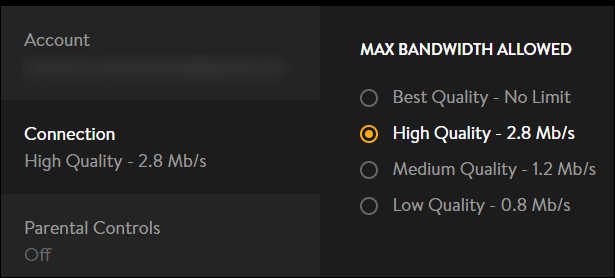
Unfortunately, we can’t cover how to limit data usage for every service out there, so you’ll probably have to do some digging to find out if your particular service has this feature.
Video Games: Plan Your “New Game Days”
Next to streaming video, video games are going to be the next biggest data hog—not playing them, exactly, but downloading them. If you’re a gamer (whether on console or on PC), then you already know how brutal downloading a new game can be. Even if you buy the physical disc you’ll end up with several gigabytes of data usage just for updates. It’s pretty bad.
For example, here’s a gamer’s data usage from last month. You’ll see two days where the gamer used around 52 GB. Those two days? They were just downloading new games.
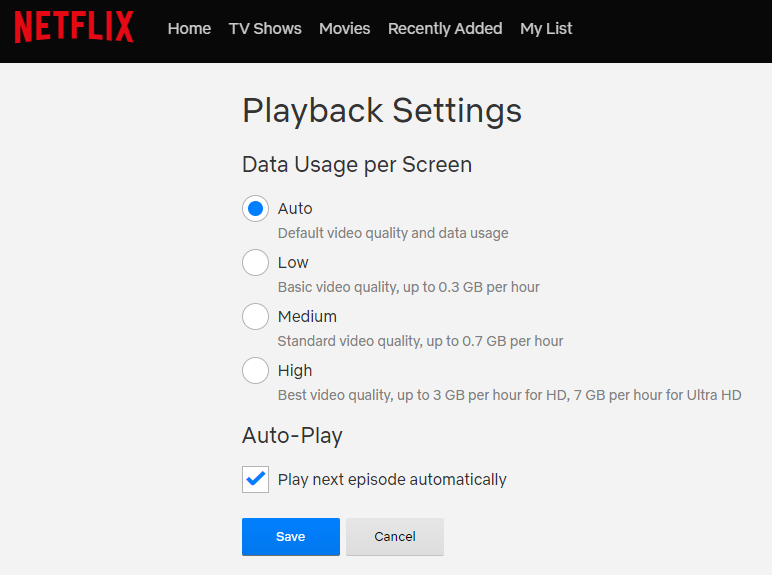
As such, you’ll need to plan your “new game days” according to your data plan. If you’re looking to minimize your chances of exceeding your data plan this is one way to do it.
It’s hard to tell someone how to manage their data, because it really comes down to lifestyle, but you really have to be smart about it when it comes to new games days—it takes planning. For example, if you’re close to the end of your billing cycle and still have ample data, go ahead and download the next game you’re going to be play, even if it’ll be a few weeks before you get around to playing it.
Similarly, if you’re going on vacation one month, and know you’re going to use less of your monthly data (since you’ll be away from home), download several games for the next few months while you can.
Watch for Uploads, Backups, and Security Cameras
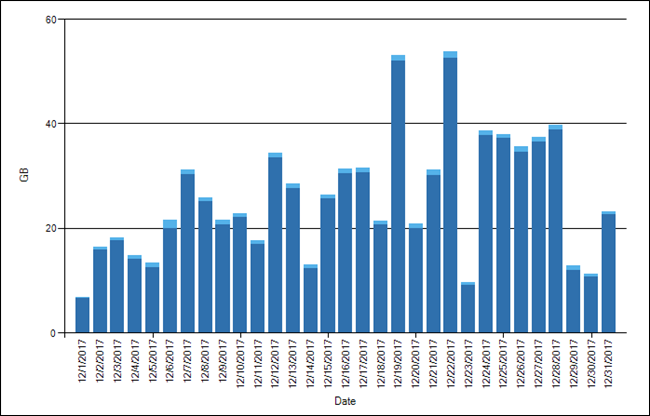
Remember, uploads count against your data cap too. If you upload videos of your kids for family to see, have scheduled backups to the cloud, or use internet-connected security cameras in your house, you’ll need to keep a close eye on all of those.
Uploads, Backups, and Cloud Services
Backup and cloud services are aplenty these days, and while you may not have a dedicated backup service, the odds are you still use some sort of cloud storage—like iCloud, Google Drive or Dropbox.
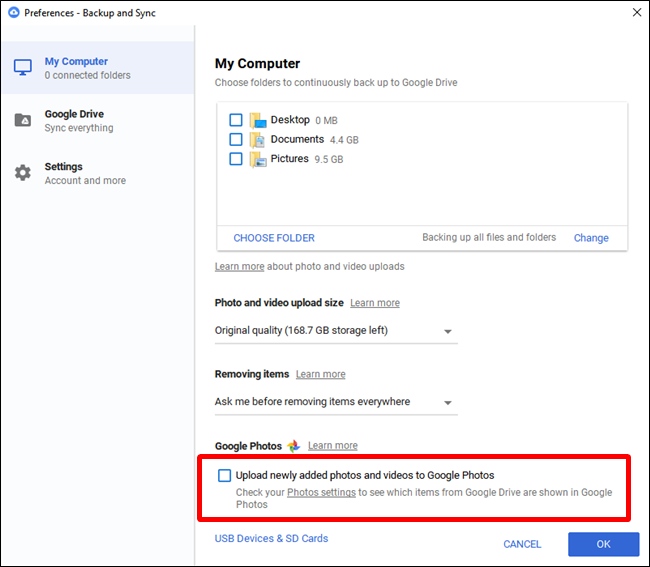
These types of services can be real data hogs, especially when they constantly sync data. For example, pretty much any cloud service worth its salt syncs all folders within its path, but can also bet it is set to automatically upload photos and videos. If you don’t pay attention to what’s going on when you set up these services, you can tell it to automatically upload all images and videos on your PC, which can really impact your data usage—especially if you have multiple PCs connected to said cloud storage.
In addition, if you do have a cloud backup service like Backblaze, keep in mind that a lot of the files you create or download will also be uploaded to your backup service. And, if you just signed up for a new backup service, that initial backup could easily use most if not all of your data plan.
Security Cameras
RELATED: How to Get the Most Out of Your Nest Cam
If you have something like a Nest Cam or Dropcam and subscribe to the associated cloud recording service, this could absolutely slaughter your data package just on uploads alone. For example, one Reddit user highlighted the amount of data his three Nest Cams use in a 30 day period, and the upload totaled a whopping 1,302 GB (1.3 TB)—and that’s without taking into consideration the ~54 GB of downloads it also used.

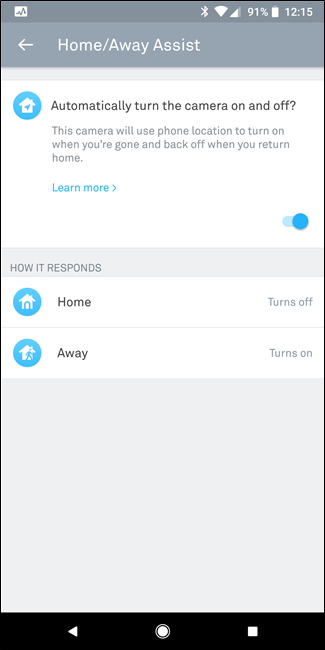
The best solution here is to keep your monitoring to an absolute minimum—set your cams to only record when you’re not at home, set it to record only when it detects motion (and not sound), and limit your camera’s quality/bandwidth settings.
Monitor Your Network for Devices Using Too Much Data
Look, sometimes gadgets mess up. Apps go rogue, downloads get corrupted, and sorts of other stuff. The end result can be something using way more data than it should be, and the only way to know is to monitor your network.
RELATED: How to Tame Your Chromecast’s Background Data Usage by howtogeek.com
Citizens has tools that can help you determine what is using your bandwidth if you are not using your own router behind ours. We can also help you troubleshoot WiFi issues if you have elected to take our WiFi service for $4.95 per month, which includes a carrier grade WiFi router that would cost you hundreds of dollars if you purchased one close to the same capabilities, and best of all Citizens supports and helps you configure your wireless network as part of the service. With this service we can remotely help you identify a rogue app and/or device that using all of your bandwidth.
If you want to own your WiFi router, we highly recommend purchasing one that meets the newest WiFi standard which is currently 802.11ac Wave2; this will cost over a hundred dollars on the low end of the scale. As your internet bandwidth increases, often your WiFi router will become the network “bottleneck” if it is not up to this standard. If you elect to purchase your own wireless router, then you will have to do your own network troubleshooting. Hopefully, the router you purchased has advanced features that allow you to easily do that.
If All Else Fails, Get a Bigger Package
This is a last resort option. But if you just can’t seem to stay with your data package, then you may be left without choice but to get a bigger data package.